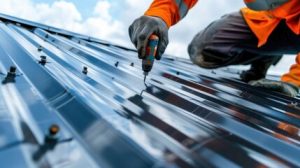Deck building involves a lot of different components. Loads from people, furniture and snow transfer through the decking to joists, beams, posts and foundations. Each must be sized and constructed properly for safety and longevity.

Many raised decks require a permit and meticulous planning to ensure the structure is safe. Using the right tools and best practices can save time and money. Contact Deck Builders Murfreesboro TN for professional help.
A beam is a structural member that transfers load. The dimension of a beam is directly proportional to the load that it can carry without failing. It is commonly made of wood, steel or concrete. Steel is more durable and fire-resistant than wood, but requires maintenance. It is also more expensive than other materials, and it is susceptible to corrosion. Beams can be curved or fabricated for special applications, but most are rectangular or square.
The psf load rating–set by local building codes–determines how much weight a deck must support per square foot. This rating affects joist size and spacing, beam spans and post placement to ensure the frame can safely carry the load.
Beams are a critical component of a deck’s framing system and must be constructed with care to ensure they can safely handle the load. The best way to ensure that your deck’s beams are built to the appropriate strength is to consult a professional engineer. He or she will use a combination of joist span tables and structural calculations to determine the correct joist size for your deck’s load rating. He or she will also consider the location of any hot tubs, pool equipment or other items that could increase the deck’s load.
In general, deck framing transfers loads from equipment and structure to the jacket legs and foundation through flooring and deck beams. Various deck structure systems may be used; however, the one favored in offshore installations is a system with longitudinal trusses made of tubulars and standard or built up beams (see figure 6.21a).
Deck framing transfers loads through floor and deck plates to the jacket legs. Various deck plate thicknesses are used, and there are also variations in the method of connecting the deck plates to the jacket legs. For example, some thicker deck plates are welded to the legs to reduce the number of bolts required.
Beams are connected to the joists with rim joists–a jigsawed notch cut into the ends of the joists–or with metal brackets attached to the joists. Rim joists can be aligned with the deck edges, or they can be inset if your deck design includes picture framing or overhangs. The rim joists must be at least the same length as the main deck joists and are usually made of 2×8 or 2×10 or 2×12 pressure-treated lumber.
Joists
Whether you’re building a deck from scratch or using prefabricated materials, there are many essential details to consider. Proper installation and material selection can prevent sagging, warping, and premature failure of the deck structure. The anatomy of a wood deck is complex, including various components such as joists, beams, and posts. Understanding joist spacing and blocking is especially important, as it ensures the structural integrity of your deck.
Deck joists are horizontal supports that distribute weight evenly across the floor and ceiling surfaces. They are typically made from wood or engineered wood, and they form a strong base that’s resistant to sagging or warping. To maximize strength and durability, joists should be inspected regularly for water damage or weakening.
While they are commonly used in homes and commercial structures, joists are also popular for home and garden projects. Often, joists are made from pressure treated lumber, which is highly durable and resistant to rot and insect infestation. However, it’s important to note that pressure treated wood can become brittle with age and may require additional maintenance.
Joist blocking is short pieces of wood installed between joists to provide lateral support and prevent twisting. They are typically spaced around 4’ to 6’ apart, but they can be placed closer for a stronger deck or to accommodate certain deck patterns. For example, a herringbone pattern may require a zigzag pattern of joist blocking to support the intricate design.
When constructing a deck, you should use joists that are rated for ground contact. Ideally, they should be at least 5” x 8”, and they should be supported by concrete piers or footings to avoid settling and foundation issues.
It’s also important to follow local building codes and take into account the deck’s psf load rating, which determines how much weight it can safely support. The psf load rating will influence the size and spacing of the joists, as well as the size and placement of the beams and footings. For example, a deck with a higher psf load rating will need larger joists and tighter spacing, while a larger deck will require larger or longer beams.
Posts
Deck posts are the vertical support structures that transfer the weight of the deck, people and furniture down to the ground. Like beams, posts must be strong and sturdy enough to hold the load, yet also be compact and efficient in size. Posts are typically made of treated wood, although steel and other materials are used for more complex deck designs. Posts are installed in concrete footings sunk into the ground, and determining how many to use depends on both load requirements and deck design. A common size is 6×6, although 4×4 posts can be used if local codes allow it. All posts should be pressure-treated and rated for ground contact.
Post spacing is a key factor in determining how much a deck can handle, its stability and safety. Load requirements and deck height play a role in this, as well as local code regulations. Heavier loads or taller decks require stronger support and closer post spacing to prevent sagging and provide lateral stability.
A good post spacing calculation takes into account joist span, beam size and deck dimensions. Using a joist span table and local codes, you can determine how far different-sized joists can be spaced between posts, as well as what size of posts to use for maximum strength and efficiency. This information will help you ensure that your deck is built properly and legally, which can save you time and money in the long run. As with all home improvement projects, it’s best to get a permit before starting construction to avoid fines and other consequences.
Piers
When it comes to building a deck, you need to be sure the foundation is solid. Without a sturdy support, your structure could collapse and be dangerous to anyone who uses it. The type of foundation you choose will depend on a variety of factors, including the intended use and the terrain where it will be built. Piers are a common choice because they can be installed more quickly than other foundation types, and they can handle a wide range of weather conditions.
There are several different types of piers, including push piers and helical piers. Each has its own advantages and disadvantages. Helical piers, for example, are driven into the ground using a screw-like device that increases the pressure on the soil to secure the foundation. They are often used in situations where other foundations may not be able to penetrate the soil or bedrock.
Other types of piers include strip footings and bell pier footings. These are rectangular blocks of concrete embedded in the soil that help to anchor a building and spread loads into the earth. They can also prevent lateral movement and reduce the risk of failure.
Deck piers can be made of wood, concrete or masonry. Wood is usually more cost-effective, while concrete or masonry are preferred for heavy structures like decks. Concrete piers are often poured on-site, while masonry ones are built off-site.
The type of pier you choose will also depend on the size of your structure and the anticipated load. Engineers will assess the soil’s characteristics and bearing capacity at the construction site to determine the appropriate pier type and dimensions.
Whether you choose a wood, concrete, or masonry pier, it is crucial to install them properly. A poorly installed pier can cause the entire deck to shift or even collapse. For this reason, it is essential to hire an experienced contractor to install your piers.
A deck is a great place to enjoy the outdoors, but it can also be an area where you are exposed to heavy wind and snow. To keep your outdoor deck safe, you should install a protective surface called Trex Protect. This product is a slip-resistant material that helps prevent the joists and beams from shifting under these harsh conditions. It also protects the deck from water damage, which can result in rot and mold growth.





